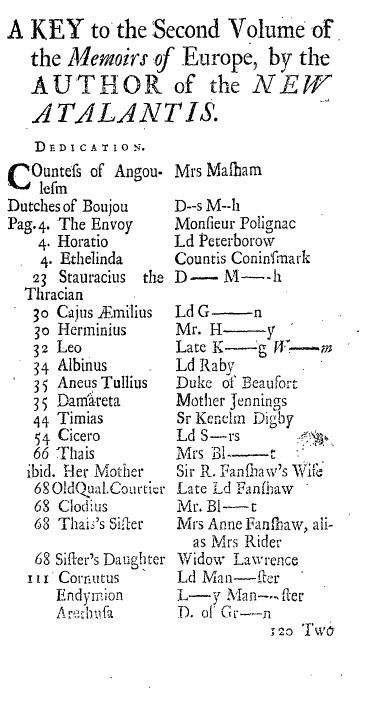 | ||
Roman à clef ([ʁɔmɑ̃ a kle], /roʊˌmɒn ə ˈkleɪ/), French for novel with a key, is a novel about real life, overlaid with a façade of fiction. The fictitious names in the novel represent real people, and the "key" is the relationship between the nonfiction and the fiction. The "key" may be produced separately by the author or implied through the use of epigraphs or other literary techniques.
Created by Madeleine de Scudéry in the 17th century to provide a forum for her thinly veiled fiction featuring political and public figures, the roman à clef has since been used by writers as diverse as Sylvia Plath, Truman Capote, Ernest Hemingway, George Orwell, Jack Kerouac, Victor Hugo, Blaise Cendrars, Philip K. Dick, Bret Easton Ellis, Naguib Mahfouz, Charles Bukowski and Malachi Martin.
The reasons an author might choose the roman à clef format include satire; writing about controversial topics and/or reporting inside information on scandals without giving rise to charges of libel; the opportunity to turn the tale the way the author would like it to have gone; the opportunity to portray personal, autobiographical experiences without having to expose the author as the subject; avoiding self-incrimination or incrimination of others that could be used as evidence in civil, criminal, or disciplinary proceedings; and the settling of scores. Biographically inspired works have also appeared in other literary genres and art forms, notably the film à clef.
